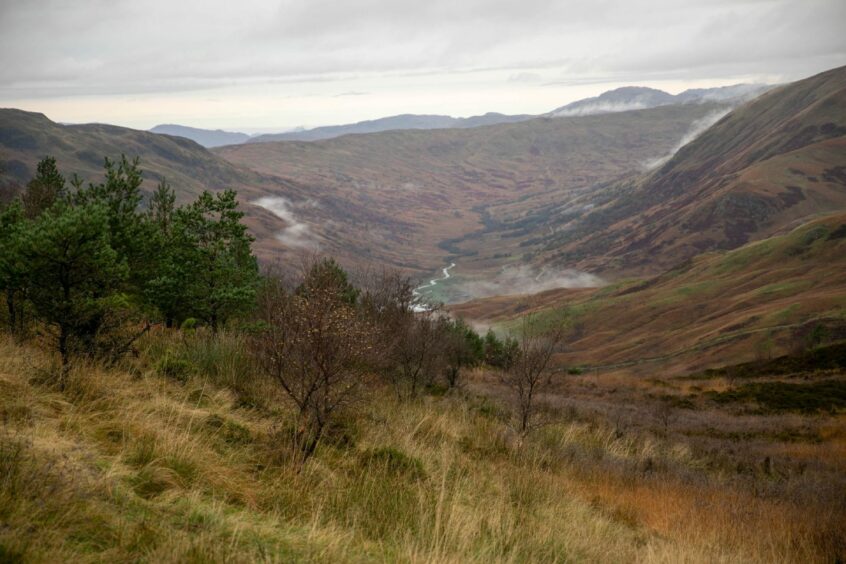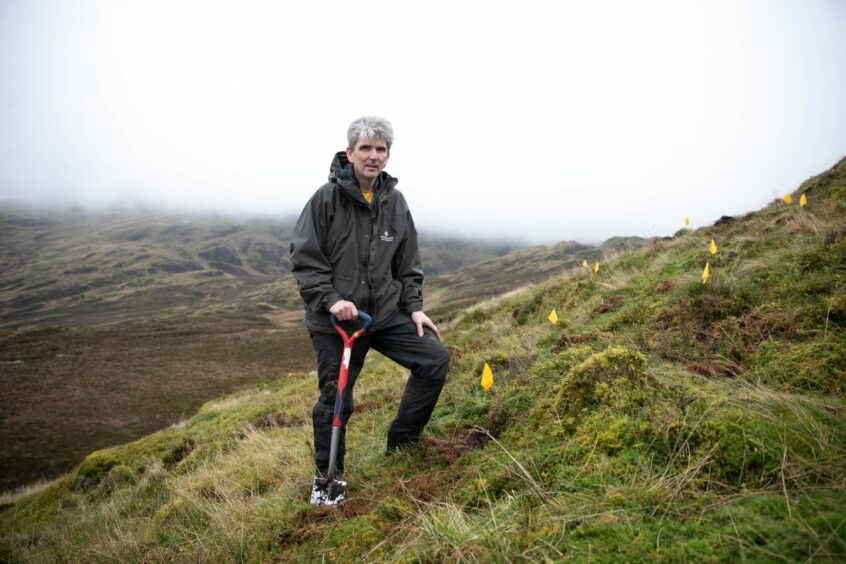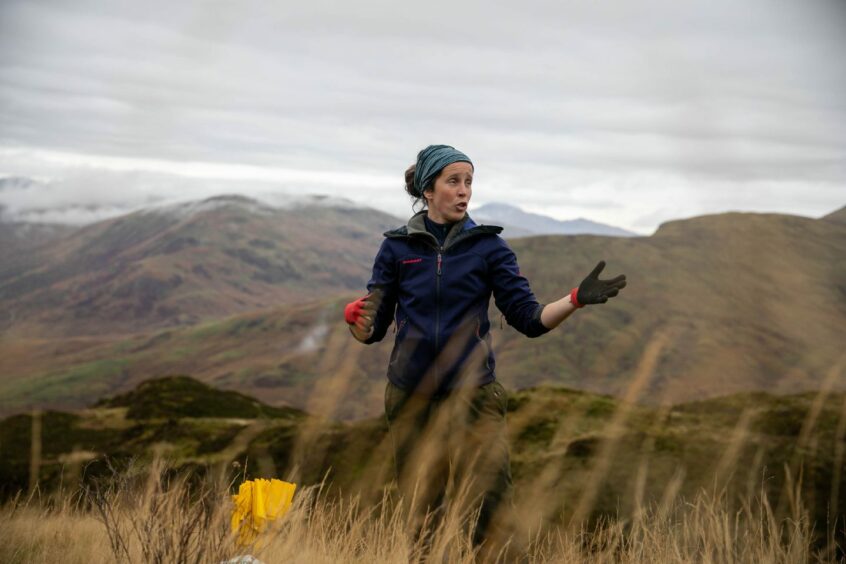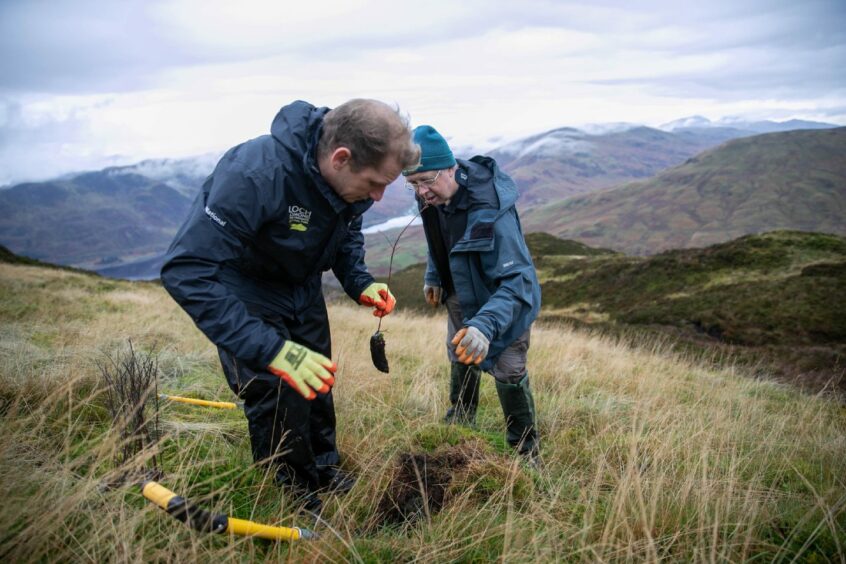Hard working volunteers at Glen Finglas are proving that forest conservation can bring hope even in a climate crisis.
Volunteers in the Trossachs struck a positive note days away from the COP26 climate summit in Glasgow – which many believe to be “the world’s best last chance to get runaway climate change under control.”
The Scottish Government’s vision is to expand woodlands to cover 21% of Scotland’s land area by 2032.
At Glen Finglas, the Woodland Trust is helping to achieve this target, having planted a million native trees since purchasing the site 25 years ago.

We found out how staff and volunteers are “returning life” to once barren hillsides.
And also how this is demonstrating the potential of reforesting to capture carbon and support wildlife.
Forest conservation leads massive transformation
Woodland Trust estate manager Hamish Thomson is proud of what has been achieved at Glen Finglas over the past quarter of a century.
“It’s been a process of massive transformation in that 25 years.
“And you can really feel the life returning.
“We’ve had so many surveys done, particularly with bird species. Woodland birds have just flourished here.”
Thriving across this rugged patch of countryside are golden eagles, pine martens, red squirrels and songbirds.
There is even a local strain of red deer, described as ‘badger faced’, with light coloured coats, hooves and face markings.
Rewind 25 years and the atmospheric hillsides were virtually devoid of biodiversity.
Part of what was once the largest sheep farm in Europe, it had been “grazed to the bone”.
The Woodland Trust wants people to come and see the transformation for themselves.
“We want to use this site as a demonstration,” he continues.
“We’ve opened it up to people. Part of what we’ve done here in the 25 years is create some fantastic opportunities for access.
“People can get out and explore it, and discover it. And learn about what we’re doing.
“And take away that lesson of there is hope. The land will recover if you give it a chance.”
Together with the banks of Loch Katrine, manged by Forestry and Land Scotland, and RSPB Scotland’s Inversnaid reserve it is part of the Great Trossachs Forest National Nature Reserve.
That’s a forest conservation project the size of Greater Glasgow.
And none of it would be possible without the hardy volunteers who don robust footwear and waterproofs and hike up the hillside to plant sapling trees.
It’s not just about carbon
When we arrive at the Trossachs, Woodland Trust ranger Gwen Raes is leading the volunteers.
Today they will be planting 300 dwarf birches – really more of a shrub than a tree – at an altitude of around 550 metres.
Getting to the planting site is an invigorating walk uphill through heather and bog. Gwen stops off on the way to allow us to gather our breath.
“I think there’s a lot of intrinsic value to having volunteers involved in woodland creation and planting,” she said.
“It makes them happy and they feel like they’re actively contributing to make a change.
“It’s just being in the outdoors and the fresh air, and doing some physical work. It’s good for mental wellbeing for them.
“Eventually, in the long run, the woodland creation will take carbon out of the atmosphere and store it for a really long time.”
But the forest conservation at Glen Finglas does much more.
Gwen explains that the regeneration of the hillside is cleaning the air, providing shelter for animals and boosting water quality, encouraging trout spawning.
“It’s the bigger picture really, rather than just carbon.”
‘It’s just a nice thing to do’
Local man Steve Roberts is among the National Parks UK volunteers helping the Woodland Trust.
“I wanted to put back something having climbed hills for the whole of my life.
“It’s given me the opportunity to do different things and to get to different areas. Not just the tops of hills.
“I also do this because it’s just a nice thing to do.
“You can’t beat that view.”
Steve also wanted to join today’s project because there is “a bit of science in it”.
This is where PhD student Sarah Watts comes in.
Tackling both the climate emergency and biodiversity crisis
Sarah’s studies involve looking at how best to restore upland woodlands. She is based at Stirling University.
“Trees are one tool we have in our ways of fighting and mitigating climate change impacts,” she said.
But, like Gwen, she championed the broader benefits.
Planting trees helps stabilise sloping ground, and can even help prevent flooding.
“There are so many broader benefits than just carbon.
“And of course biodiversity. We’re facing a dual climate and biodiversity crisis.”
Sarah will return to the hills to find out how the little shrubs are faring. Her work will contribute to the future conservation of upland habitats.



